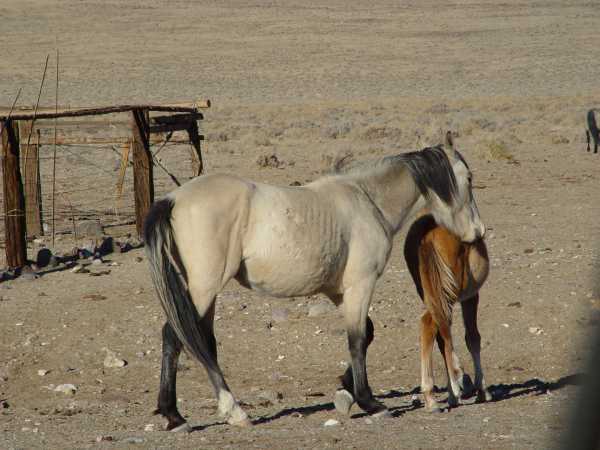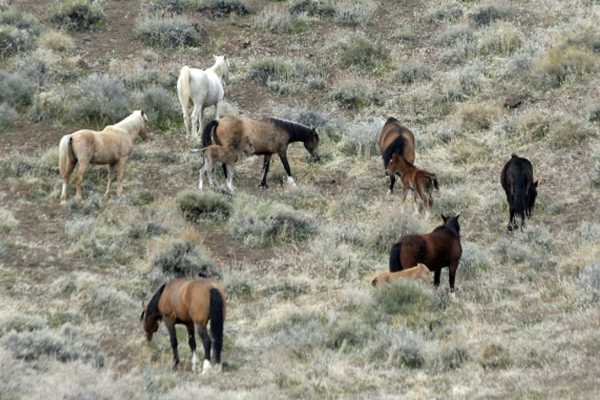|
Part Three

(This feature begins at Part One.)
Not all the successive generations were lighter than those that produced them. In some instances a lighter mare produced a darker foal. Colors produced were dependent upon which genes were passed. However most of the horses displaying these color variations still had bicolored manes and tails (strands of light colored hair in their manes and tails.)

In many instances the successive generations became lighter.


Three of the offspring from this gene pool were picked up by the Nevada Department of Agriculture and recovered by advocates from the livestock sale. (See
42 More Virginia Range Horses Rescued..)

The youngest horse has lighter skin and blue eyes.

The advocates are working on a plan to keep the three cream colored horses together so that they can be studied more closely. A California non-profit is considering accepting the horses for an equine facilitated therapy program where they can remain together and their color genetics appreciated.
This feature will likely be continued.
Photo credits: Willis Lamm, Sharon Lamm, Anne Hall, and Bob Retzer.
| 




